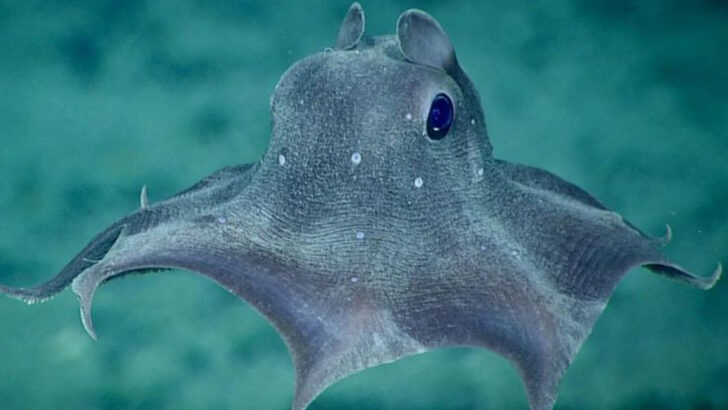The deep sea is a world unlike any other—dark, mysterious, and full of creatures that seem straight out of a sci-fi movie. Some of these animals look so bizarre, scientists are still trying to understand how they survive in such extreme conditions. From glowing jellyfish that light up the abyss to fish with teeth so sharp they could slice through steel, the deep sea is home to nature’s wildest imagination. Get ready to dive into the unknown and meet 10 deep sea creatures so strange, they challenge everything we think we know about life on Earth. These oddballs aren’t just surviving—they’re thriving in a place where very few dare to explore!
Anglerfish
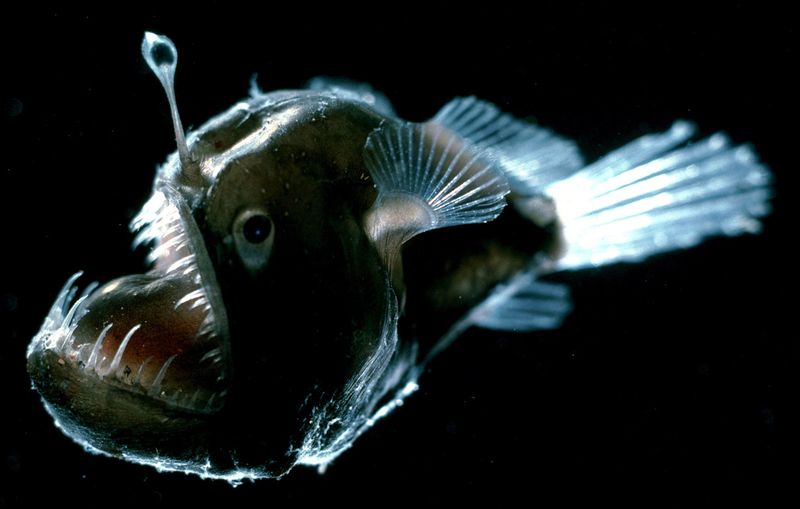
With its terrifying appearance and glowing lure, the anglerfish is a master of deception. Found in the murky depths, it uses its bioluminescent lure to attract unsuspecting prey. Its massive mouth and sharp teeth are designed to snatch up any creature that ventures too close. Interestingly, the anglerfish exhibits extreme sexual dimorphism, with tiny males attaching to females, eventually fusing into their bodies. This strange form of reproduction allows the female to carry multiple males at once. A true marvel of evolutionary adaptation, the anglerfish continues to intrigue scientists and inspires awe.
Gulper Eel

The gulper eel, with its oversized mouth and long, whip-like tail, is a creature of the abyss. Its mouth can inflate to swallow prey much larger than itself, a handy adaptation for the scarce food in the deep sea. Despite its fearsome look, the gulper eel is elusive and rarely seen. It can produce light along its tail, possibly to attract prey or confuse predators. This fascinating eel remains one of the ocean’s great mysteries, as much about its life and behavior is still unknown. Scientists are eager to learn more about this enigmatic species.
Vampire Squid
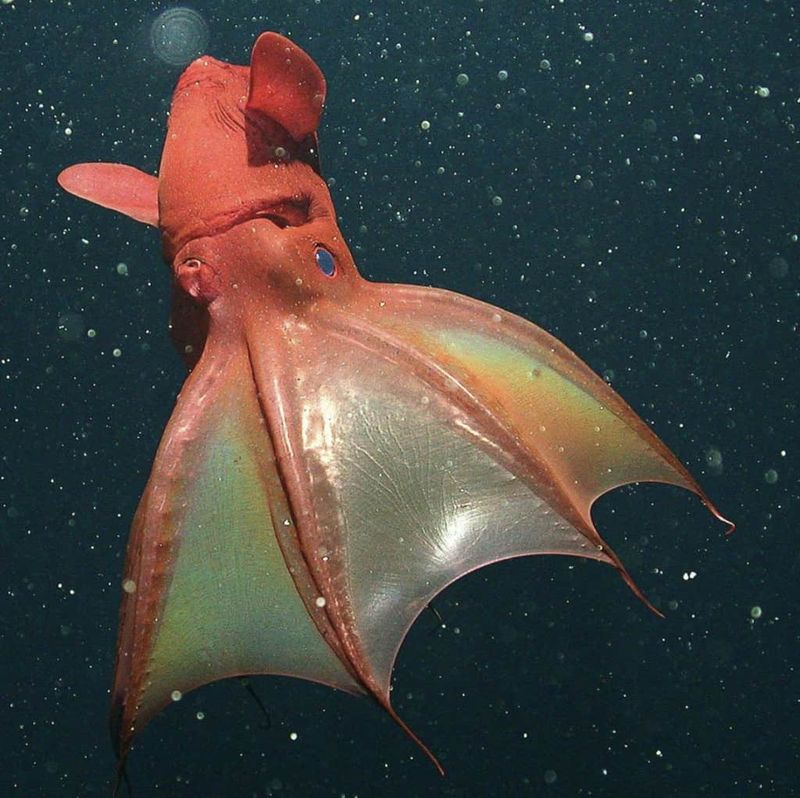
Despite its name, the vampire squid doesn’t suck blood. Instead, it boasts a cloak of webbed skin connecting its arms, resembling a cape. Living in oxygen-minimal environments, it feeds on marine snow – organic debris falling from above. Its deep red eyes and bioluminescent organs make it a sight to behold. When threatened, it can invert its cape, revealing spiny projections to deter predators. The vampire squid’s unique adaptations have sparked curiosity and admiration, as it thrives in conditions few can endure. A true survivor of the deep, it embodies the resilience of life.
Giant Squid
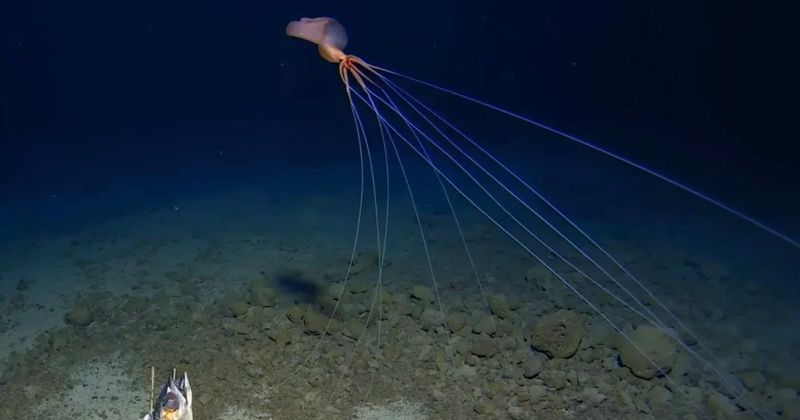
The elusive giant squid, once believed to be a sea monster, is a legend brought to life. With eyes the size of dinner plates, it navigates the deep ocean with ease. Little is known about its behavior, but it is thought to be a solitary predator. Its long tentacles are equipped with suckers lined with sharp teeth, allowing it to grasp prey securely. The giant squid’s elusive nature and massive size have long fascinated scientists and storytellers alike. It remains one of the ocean’s most enigmatic inhabitants, shrouded in mystery and allure.
Barreleye Fish

The barreleye fish, with its transparent head, offers a glimpse into the bizarre adaptations of the deep sea. Its tubular eyes, encased in fluid-filled domes, can rotate to look upwards for prey. This unique feature allows it to track jellyfish and other small creatures drifting above. Found in temperate waters, the barreleye fish’s peculiar appearance and fascinating adaptations make it a subject of scientific intrigue. Despite its strange look, it is a model of efficiency and specialization in a challenging environment. The barreleye fish continues to be a highlight in deep-sea research.
Goblin Shark
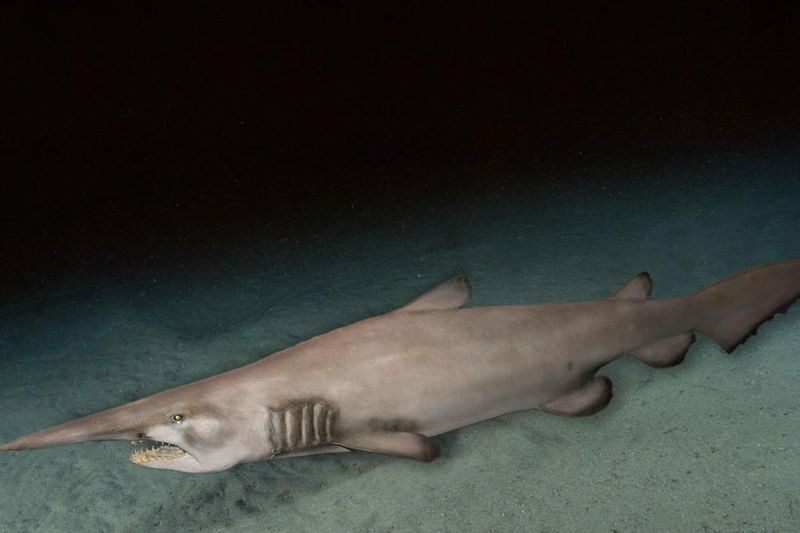
The goblin shark, sometimes called a living fossil, is a reminder of the ocean’s ancient past. Its elongated snout and protruding jaws create an eerie appearance that belies its sluggish lifestyle. This deep-sea shark uses its snout to sense electrical fields emitted by prey. Once detected, the jaw extends rapidly to snatch the target. Found in deep waters around the world, the goblin shark’s unusual features have captivated researchers and sparked many myths. Its continued existence offers insights into evolutionary processes that have persisted for millions of years.
Yeti Crab
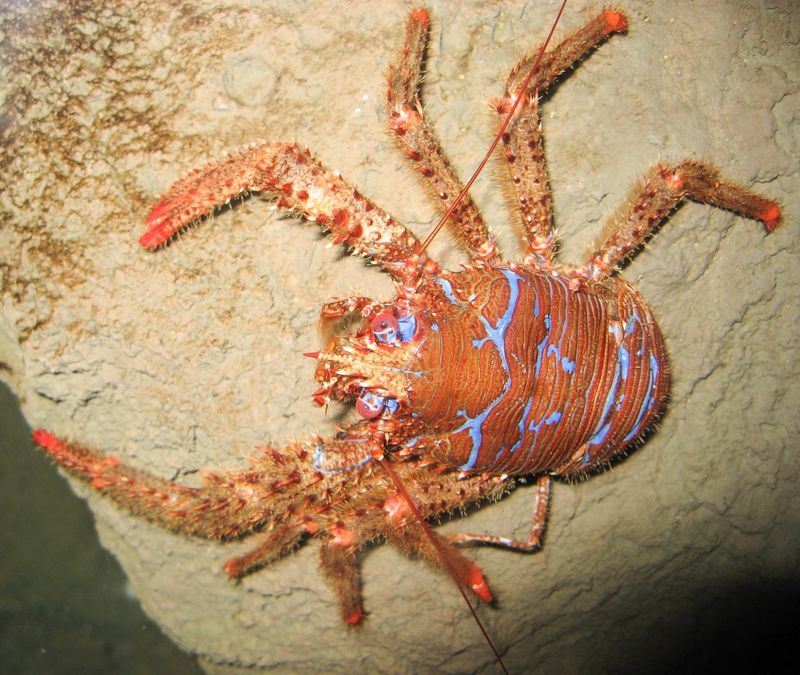
The yeti crab, with its hairy claws and peculiar behavior, is a resident of hydrothermal vents. Its furry pincers are thought to cultivate bacteria, which may serve as a food source. Living in the harsh environment of the ocean floor, it thrives amidst high temperatures and toxic chemicals. Its discovery in 2005 expanded our understanding of life in extreme conditions. The yeti crab’s unique adaptations and mysterious lifestyle continue to intrigue scientists. It represents the incredible diversity of life found in the ocean’s depths, challenging our perceptions of habitability.
Dumbo Octopus
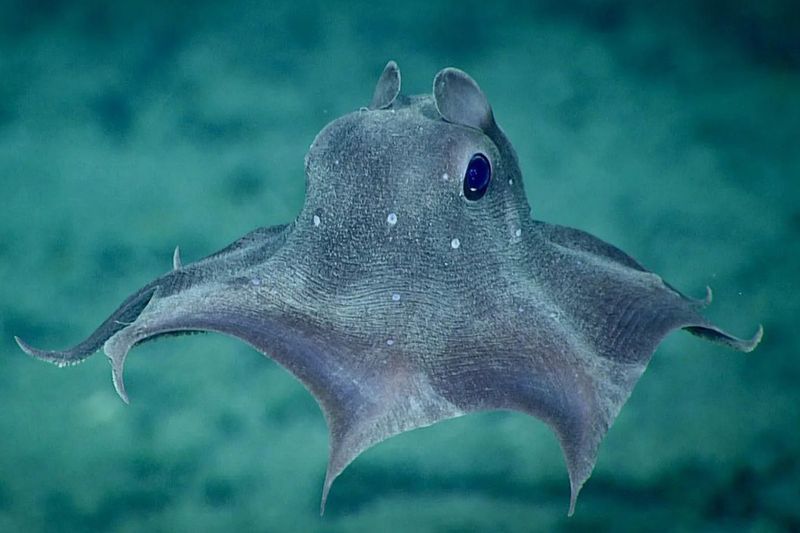
Named for its ear-like fins resembling Disney’s Dumbo, the dumbo octopus is an elegant dweller of the deep. It uses its fins to glide gracefully through the water, a gentle ballet in the abyss. Unlike many of its relatives, it is a benthic octopus, living near the ocean floor. Its soft, gelatinous body allows it to withstand the crushing pressure of the deep sea. Discoveries of its mating and feeding behaviors have intrigued scientists. The dumbo octopus’ whimsical appearance and gentle movement make it a charming and fascinating inhabitant of the deep.
Frilled Shark
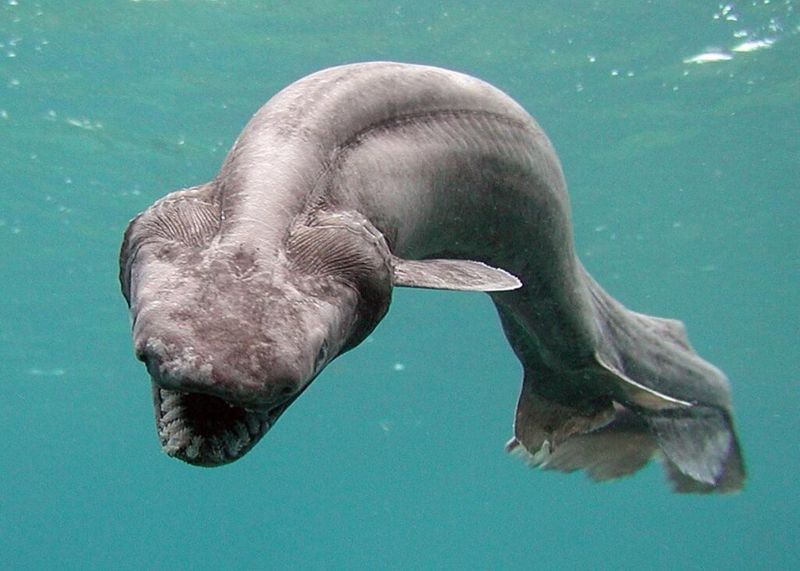
The frilled shark, often likened to a sea serpent, is a relic of the prehistoric sea. Its elongated, eel-like body and frilled gills give it an archaic appearance. Found near the ocean floor, its slow, undulating movements help it ambush prey. Possessing over 300 needle-like teeth, it can trap squid and other soft-bodied animals with ease. This shark’s ancient lineage offers a glimpse into the ocean’s past, exciting paleontologists and marine biologists alike. The frilled shark’s otherworldly look and primeval charm continue to captivate all who study it.
Sea Pig

The sea pig, a type of sea cucumber, ventures across the ocean floor on tube-like legs. Its pink, plump body is a distinctive and somewhat comical sight. Feeding on organic particles, it plays a vital role in the ocean ecosystem. Inhabiting deep, cold waters, the sea pig’s slow and steady demeanor belies its importance. Its unique appearance and ecological significance have made it a subject of fascination and study. Scientists continue to uncover the mysteries of these creatures, revealing a world of enchantment beneath the waves.

